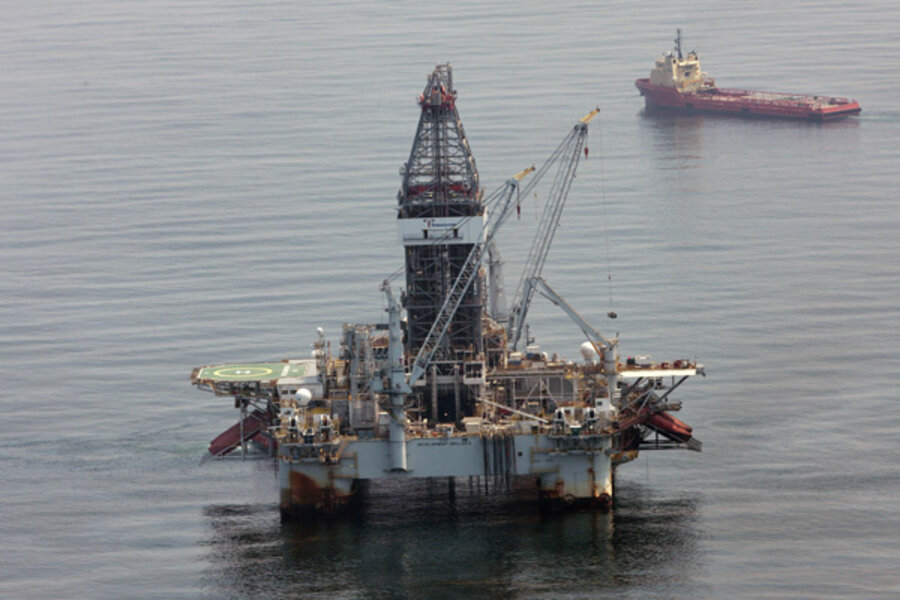Offshore drilling moratorium: How much could it cost the Gulf?
Loading...
The Obama administration’s six-month moratorium on exploratory deep-water offshore drilling in the Gulf was overturned on Tuesday by a New Orleans federal judge.
Judge Martin Feldman cited the calamitous impact the measure would have on local economies for his injunction, writing that the administration hadn't shown that all deep-water offshore drills posed an "imminent danger." The White House has promised an immediate appeal.
But how much could the moratorium really affect local economies if reinstated? A lot, say analysts.
Although wells already producing oil are not affected by the moratorium, 33 rigs in the process of exploratory deep-water drilling are now sitting idle. They employ some 8,000 people. With average weekly oil-rig wages of $1,804, the potential for lost income is about $57.7 million per month.
That's just the direct impact, says Loren Scott, a professor emeritus at Louisiana State University who also owns a financial consulting firm.
“At a minimum, 32,000 jobs could be lost,” he said, taking into account layoffs at industries supported by the rigs’ employees like movie theaters and restaurants.
That figure is a conservative estimate, adds Professor Scott, since it's based on his research of Louisiana's onshore drills. Offshore platforms cost tens of millions more a year to maintain, meaning that more funds going towards support industries would be lost.
Rig supply boats, for instance, charge about $30,000 per day for services – for 33 rigs, that’s nearly $1 million in revenue to local industries lost each day.
The moratorium could also push new exploration out of the Gulf, another potential blow. Rig platforms cost between $250,000 and $500,000 a day to maintain, even when they’re inactive, according to the Louisiana Mid-Continent Oil and Gas Association.
“They’re not going to sit idle and give up that amount of money for six months,” said Professor Scott. “They’re going to get out of their present contracts and go to Brazil, West Africa, Australia – where there’s oil and high demand for drilling platforms.”
Many also doubt that the moratorium, if reinstated, would last only six months. A report from Morgan Stanley released earlier this month estimated that the committee charged with investigating the safety of exploratory wells would likely take up to 18 months to make a decision, and could take as long as four years to reinstate drills.
Few of the 17 oil companies with exploratory wells affected by the moratorium are likely to stick around that long.





